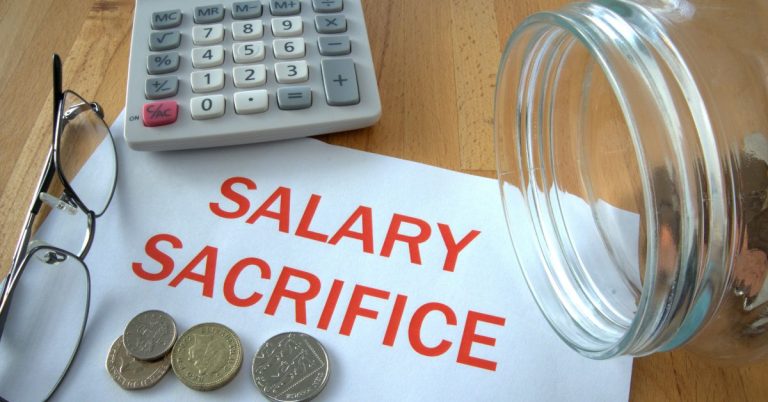Applying For Workplace Pension Scheme: Full Guide
The government says it wants to make sure everyone has access to a workplace pension by 2020. And it says it will do everything possible to help businesses set up pensions schemes for their workers. But what does that mean for employers? Here are some things to know about setting up a workplace pension.
What is a workplace pension?
Workplace pensions are designed to provide retirement income to people who work for companies that don’t offer a traditional defined benefit pension plan. They’re usually offered alongside a defined contribution plan such as a salary sacrifice arrangement.
How many people use workplace pensions?
Around one million people now take part in workplace pensions. This includes around half a million people who have joined since 2010.
Who needs to set up a workplace pension?
Anyone who employs someone for at least three months, including freelancers and contractors. You’ll need to check whether your employee falls under the National Insurance system. If they do, you’ll be required to contribute towards their NI contributions.
Who you must enroll

The government has announced that employers must now enroll workers earning above £10,000 per annum into workplace pensions. Employers must also enrol employees who are aged 22 or older, and those who are younger than 22 but still work for the employer. This includes part-time employees, freelancers, contractors and agency workers.
Employees who are aged under 22 can’t receive any benefits until they hit the state pension age. They will be able to start receiving payments once they turn 25.
In addition, the government has confirmed that it wants to extend automatic enrolment to all employees working in Britain. Currently, around four million people are enrolled automatically.
What is a workplace pension?
Workplace pensions are taxfree saving plans set up by employers that allow employees to save money into a scheme while still being paid. They are often offered alongside a defined contribution benefit (DCB), where the employer contributes a certain amount each month into a fund managed by a third party provider. This allows you to invest your money in whatever way you want without having to worry about what the market does.
Employees must contribute towards their pension though deductions taken from their salary, and employers also contribute towards the pension scheme, making it even better value. If you’re looking for a good deal, look no further than a workplace pension.
When did the company pension program begin?
Automatic enrolment was introduced in April 2012. Under automatic enrolment employers are required to automatically enroll eligible employees into a workplace pension scheme. This applies to most people working in the UK.
Employees will automatically be enrolled into the workplace pension if they work in one of the following sectors:
• Public sector – including local government, police, fire and ambulance services; education; health and social care; justice; defence; transport; energy supply; water supply; housing; environmental protection; town planning; licensing and registration; consumer affairs; culture; sport; heritage; libraries; museums; arts councils; archives; broadcasting; telecoms; postal services; telecommunications; banking; insurance; finance; credit unions; building societies; stockbrokers; investment advisers; accountancy practices; law firms; human resources departments; payroll companies; recruitment agencies; employment tribunals; and legal aid providers.
• Private sector – includes all businesses except those listed above.
If you are unsure whether your employer meets the criteria, contact us.
Workplace pension rules
The European Union introduced auto-enrolment in April 2016. This requires employers to automatically enroll eligible workers into a workplace pension scheme unless they opt out. Those earning less than €10,500 ($11,200) per annum must contribute 4% of their salary towards a retirement fund.
This article explains what you need to know about auto-enrolment.
Workplace pension contributions
Employers must make contributions into employee pension funds. These contributions are mandatory under law although there is a minimum level required. This includes employer contributions to the state retirement fund, occupational pension scheme and personal pension scheme. However, employees do not have to pay anything towards their own pensions. They must contribute towards their own pension.
There are many different ways employers could manage their pension schemes. Some employers choose to offer automatic enrolment where they automatically enroll eligible workers into a workplace pension scheme. Others opt for a defined benefit plan where they provide a fixed amount of money each month for life. And some employers choose to use a combination of both.
Workplace pension tax relief
The government introduced changes to workplace pensions in April 2018. This included making it easier for employers to give employees cash rather than shares in their pension fund.
Employees are now able to opt out of receiving their employer contributions in shares and instead take a lump sum payment. They can do this either upfront or over several years.
This change makes sense because people tend to spend the money they save in one go, whereas saving in shares allows you to spread the investment risk over many years.
However, there are some downsides to giving up your employer contributions. For example, if you decide to take a lump sum rather than make regular payments, you won’t be eligible for state pension credits. You’ll also lose access to employer defined contribution pension schemes.
If you’re thinking about taking a lump sum yourself, you might want to consider whether you’d prefer to use your savings to buy an annuity. These allow you to guarantee a certain amount of money each month, regardless of what happens to interest rates.
You could also try to find another job where you can keep contributing to your pension. If you’re self employed, you could set up a personal pension plan. Alternatively, you could start working part time while continuing to contribute to your existing pension.
Finally, you could ask your employer to continue paying you into your pension scheme. But remember, if you stop paying into your pension, you’ll lose your entitlement to a full state pension when you retire.
Best workplace pension companies for small businesses
There are many different workplace pensions that you could choose from. Some are free, some charge fees, and others offer discounts for larger employer groups. But how do you know what’s right for your company? Here we look at three types of workplace pensions and explain why each one might work well for your organisation.
The first type of workplace pension is called a defined contribution scheme. This is where you contribute money into a pot with your employer. When it comes to paying out benefits, your employer takes responsibility for deciding how much you receive. You don’t pay anything extra towards your retirement. If you earn less than £10,000 per annum, you won’t even notice the cost. However, there are tax advantages to this type of scheme. Your contributions aren’t taxed because they’re considered part of your salary package. And if you take early retirement, you’ll still get a lump sum benefit paid directly into your bank account.
A second option is a defined benefit scheme. In this case, your employer makes regular payments into a fund, based on your salary. These funds are invested and grow over time. At retirement age, you receive a fixed amount of money. Unlike a defined contribution scheme, you’ll pay taxes on the value of the benefit received. Defined benefit schemes tend to be more expensive than defined contribution schemes. But they provide a guaranteed payment at retirement. They’re usually only appropriate for large organizations.
Finally, there are hybrid schemes. Hybrid schemes combine elements of both defined contribution and defined benefit plans. For example, you could make a monthly contribution to a pot. Then, when you retire, you’d receive a lump sum payout. Or, you could opt for a system where you make a single upfront contribution. This is known as a personal pension. Once again, you’ll pay no further contributions as long as you keep working. But once you stop, you’ll receive a lump sum benefit.
Frequently Asked Questions
What is a pension?
A pension is a retirement fund that helps you save money over a long period of time. You put some money into it now, and you get paid out when you retire. It could be called a savings account for old age, or a retirement plan.
There are different kinds of pensions – there’s a personal pension, a workplace pension, and a state pension.
The government runs a state pension scheme, where everyone gets a certain amount each month once they turn 65. If you don’t work, you won’t pay anything towards your state pension. But you do contribute to your state pension if you earn above a certain level.
If you work for someone else, you might be able to choose whether you take part in a workplace pension scheme. This is usually offered by large companies, and gives you a tax break if you decide to go along with it.
You might be eligible for a personal pension too. This is usually run by yourself, or by a financial institution like a bank. If you’re self employed, you’ll probably be able to offer a personal pension to your workers.
Can I pay more than the minimum contribution into a workplace pension?
You might want to consider increasing your employer’s pension contribution towards your retirement savings. This could help you save money in the long run as well as provide extra benefits such as tax breaks. However, it’s important to understand what happens if you do decide to increase your pension contributions.
The amount you contribute each month depends on how much you earn. If you receive a salary rather than an hourly wage, the amount you put into your pension pot will depend on your earnings history and your age. So, if you’re 25 and earning £20,000 per annum, your employer will usually match up to 3% of your salary.
If you’re older, you may be eligible for a state pension, which will reduce the amount you need to contribute to your pension fund. If you’re aged 60 or over, you must start making payments into your pension plan at 55. But there are circumstances where you can make additional contributions above the minimum.
For example, if you retire early, you may be allowed to make additional contributions to your pension. Also, if you’ve been employed for less than five years, you may be able to make additional contributions. These contributions aren’t taxed, but you may still owe some income tax on your pension contributions.
Your employer may also choose to make additional contributions to the pension pot. In most cases, your employer will match the amount you put into the pension pot. For example, if you put £1,000 into your pension pot, your employer will typically add another £1,000 onto your account. This way, both you and your employer benefit from the increased contribution.
However, it’s worth noting that the maximum amount you can contribute to your pension in a single tax year is capped at £40,000. If you exceed this limit, you won’t be able to claim tax relief on the excess contribution.
In addition, you may be required to make additional contributions if you take part in certain schemes. For example, if your employer offers a defined benefit pension scheme, you will be expected to make additional contributions.






